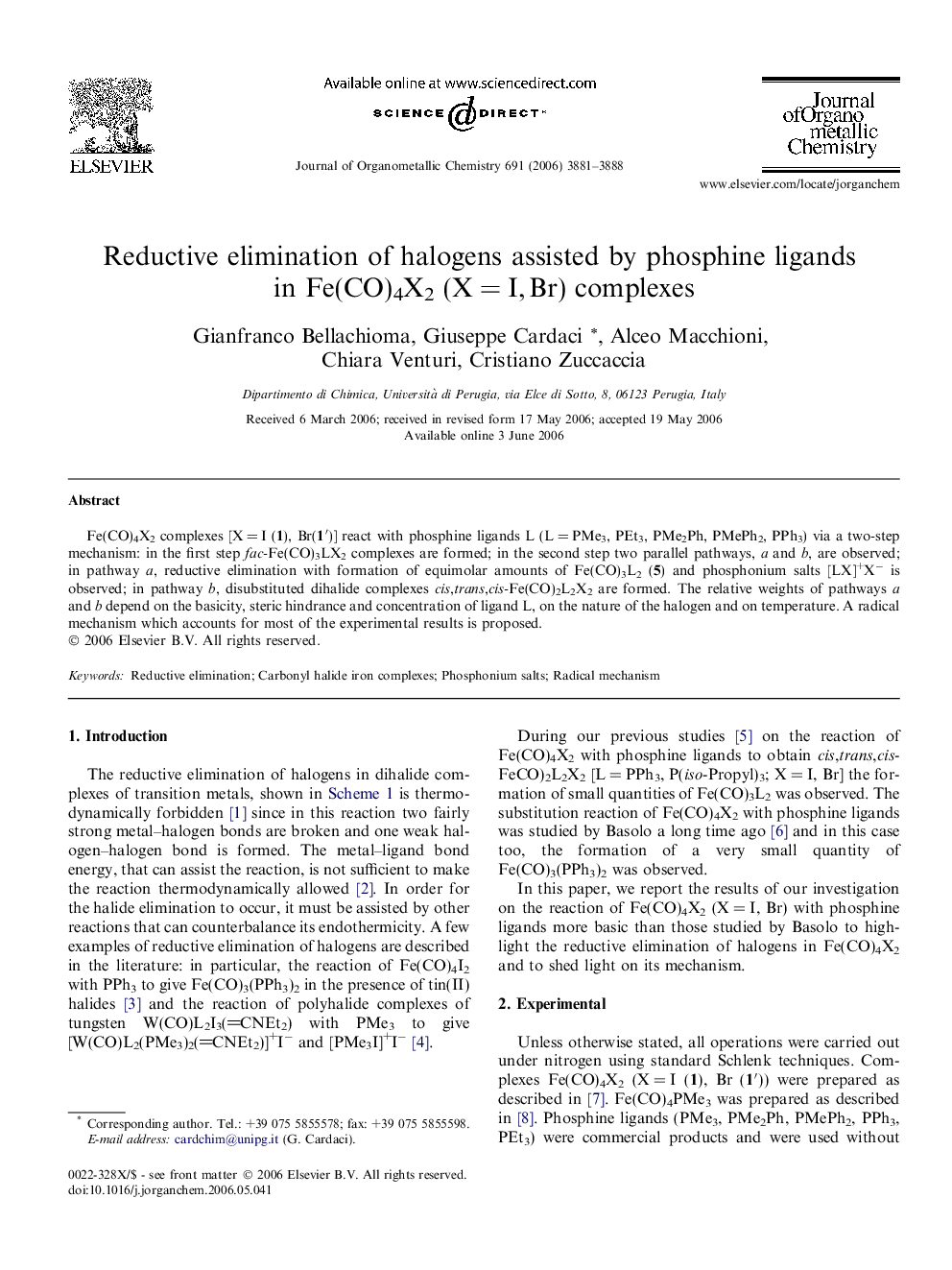| Article ID | Journal | Published Year | Pages | File Type |
|---|---|---|---|---|
| 1326973 | Journal of Organometallic Chemistry | 2006 | 8 Pages |
Fe(CO)4X2 complexes [X = I (1), Br(1′)] react with phosphine ligands L (L = PMe3, PEt3, PMe2Ph, PMePh2, PPh3) via a two-step mechanism: in the first step fac-Fe(CO)3LX2 complexes are formed; in the second step two parallel pathways, a and b, are observed; in pathway a, reductive elimination with formation of equimolar amounts of Fe(CO)3L2 (5) and phosphonium salts [LX]+X− is observed; in pathway b, disubstituted dihalide complexes cis,trans,cis-Fe(CO)2L2X2 are formed. The relative weights of pathways a and b depend on the basicity, steric hindrance and concentration of ligand L, on the nature of the halogen and on temperature. A radical mechanism which accounts for most of the experimental results is proposed.
Graphical abstractHighly basic phosphine ligands L (L = PMe3, PEt3, PMe2Ph) promote halogen reductive elimination in dihalide complexes of iron Fe(CO)4X2 (X = I, Br), with formation of equimolar amounts of Fe(CO)3L2 and phosphonium halide [LX]+X−. The results of the study on the effect of the concentration, basicity and steric hindrance of L, the halogen and temperature on the reductive elimination support a radical mechanism.Figure optionsDownload full-size imageDownload as PowerPoint slide
